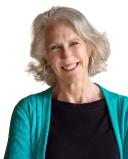Aging
From Here to Eternity in Six Important Steps
Personal Perspective: A childfree octogenarian takes care of loose ends.
Posted September 6, 2023 Reviewed by Ray Parker
Key points
- An 89-year-old shares her tips for planning the end of her life.
- It's natural, but risky, to procrastinate. Take it little by little.
- Involving loved ones inspires them to make their own plans.

But who will take care of you when you’re old?
Pretty much everyone who doesn’t have kids has repeatedly heard this question, regardless of how old they are. The query is kind of weird, considering many offspring aren’t willing, well-suited, or in geographic proximity to do the job.
A little less than six months ago, my childfree, friend Wendy asked me to play a role in helping manage her last days. She’s a hale and feisty eighty-nine-year-old who lives across the continent.
Deeply spiritual and funny as all get out, Wendy formerly held fast to the notion that she would be on her own at the end, her death quick and manageable. Did I mention she’s an optimist? So she delayed. While we both hope she still gets her wish, she’s now put plans in place for alternative endings.
Wendy is convinced it would have been much less taxing had she started much earlier. She’d be the first to tell you that procrastinating isn’t wise.
Whether you’re doing your planning or helping support a loved one (especially someone without kids of their own), Wendy shared her tips for making the job a little easier for everyone involved.

1. Make a list of everyone you know who cares about you and has wondered about your end-of-life plans.
I’ve reminded Wendy for years that I’ll help her when she needs me, even though we live so far apart. It was both logical and a cause for celebration when she finally asked me to take on a specific role we then refined together. I told her how much it meant that she asked.
Since then, she’s had frank conversations with other close friends, as well as a relative or two. She’s surprised at how readily folks have responded positively. Our roles and responsibilities are now divvied up, Wendy will soon send us each other’s contact information.
She’s buoyed by all the supportive responses and practical suggestions her people have shared. “It’s what we do for those we love,” is a motivating refrain she’s heard repeatedly.
2. Inform your primary care physician about who you’ve named as your healthcare proxy and what’s important to you as you near life’s completion.
I had my first conversation with my doctor a year or two ago, and she made notes in my records. My medical power of attorney has been scanned into my file, and she knows what matters to me in the end.
After I shared my experience with Wendy, she opened up to her physician, and they’ve now had several conversations about her desires and key resources. In case of emergency, the doctor has my name and number, as well as contact info for a friend who lives nearby.
3. Seek out your local senior center. They’ve got oodles of resources to share.
Wendy discovered her local senior center and now considers its director a trusted friend. Not all of us will be able to forge such a personal connection, but these people are a treasure trove of community resources for all sorts of services.
Through the center, Wendy has found aging life care managers, real estate professionals who specialize in properties designed specifically for elders, and a host of other people in the know. They educate her about what steps to take, and she proceeds at her own pace.
4. Connect with an estate planning attorney who can put your wishes in writing.
Wendy has streamlined plans for what she’ll leave behind, which will ease the burden on loved ones charged with settling her estate. The plans she’s made with the attorney she selected are solid, though she knows she can make some changes as her needs become more specific.
5. Go through your possessions and designate special things for special people, recycle the superfluous, and dispose of what you can so others have less to manage.
Now that Wendy’s completed most of her planning, she’s looking at all her belongings with new eyes. Tags with people’s names are stuck on special items. She’s explored consignment stores to sell furniture she no longer uses, building relationships with shop owners for that day in the future when she or someone on her care team needs them.

6. Do a little bit every day so tasks aren’t so daunting. You don’t have to get it perfect right away.
Early in the planning process, Wendy was daunted by all she had to do. She shared her overwhelm to the extent of her to-do list. After talking it through, she felt re-energized. She took care of some of the easy stuff first, then knuckled down to tackle a few of the more challenging tasks. Slowly momentum grew, with me cheering her on in our monthly calls. Today in her voice I hear satisfaction and a smidge of pride at all she’s accomplished.
This woman who has mentored so many of us about our dawning elderhood is showing the grace and courage involved in taking care of her final life plans. Wendy inspires us all to get cracking, so our own elderhood needs won’t be so tough on those who love us.




